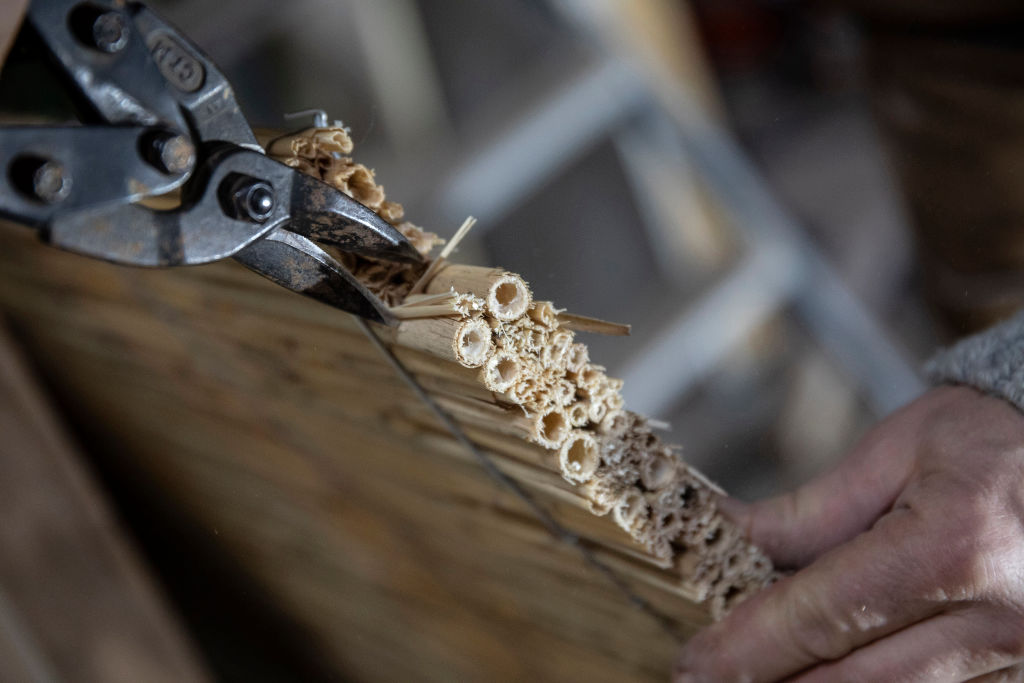
Lots of things can affect the interest rate you pay on your mortgage: your deposit amount, the state of the economy, your credit score. Now, there’s a new factor for Dutch homebuyers: what your home is made of.
This month Triodos, a Netherlands-headquartered bank, launched what it calls a “bio-based mortgage.” Customers who buy or build homes made from natural materials like wood, flax, straw, and even fungi will pay lower interest rates than those who use other materials. The aim, Triodos says, is to stimulate the use of those plant-based substances in construction because they produce fewer greenhouse gas emissions than conventional steel, concrete, and cement.
This isn’t the first time a bank has tied interest rates to the environmental performance of buildings. In recent years, as the fight against climate change has gathered pace and banks have sought to bolster green credentials, the market for energy efficiency mortgages has expanded rapidly. These so-called “green mortgages” charge lower interest rates for homes that need less energy to run because they are well insulated or use technology to control energy use. The logic is two-fold: First, homeowners who pay less for energy will have more money to pay their mortgages, and are therefore a safer bet for banks. Second, offering cheaper mortgages for more energy efficient homes makes them more desirable and encourages developers to build them, which generates housing stock that produces fewer greenhouse gas emissions.
Since the 1990s, state and local governments in the U.S. have also facilitated a series of energy efficient mortgage programs, in which homebuyers can borrow extra money to cover the cost of energy efficiency retrofits. In the Netherlands, Triodos offered the country’s first energy efficiency mortgage in 2012, and in 2020 the bank stopped offering full mortgages on all buildings with low energy efficiency ratings.
But climate advocates say focusing only on reducing energy use in homes ignores a big part of the carbon footprint of buildings. Before you even get the keys to your home, huge quantities of planet-warming pollution have already been pumped into the atmosphere to produce and assemble the building materials. Those emissions from the construction industry are known as “embodied” or “embedded” carbon. They make up a staggering 11% of the world’s greenhouse gas emissions, according to the World Green Building Council.
In the Netherlands, tackling embodied carbon is a particularly hot topic. Because the country has already gotten good at building well-insulated buildings powered by renewable energy, the carbon emitted during construction accounts for a larger share of a building’s lifetime footprint than in the rest of Europe—as much as 90%, according to Triodos.
The plant-based construction methods encouraged by Triodos’ new mortgage are one option for reducing emissions from construction: where steel factories emit large amounts of carbon dioxide to produce the metal, for example, plants absorb carbon dioxide as they grow, and materials made from them can store it for hundreds of years, if treated properly. Wood is the most popular bio-based option, but engineers have also developed new materials such as bricks made from algae and foams made from fungi.
A 2020 study in IOPScience by researchers in Finland found that, in a scenario where the percentage of new buildings in Europe made from wood increased from 10% in 2020 to 80% by 2040, and if wood was used in more building elements than it currently is, 0.42 gigatonnes of carbon could be removed from the atmosphere over that 20 year period—about a fifth of the E.U.’s emissions for 2020. At the same time, thousands of metric tons of carbon dioxide that would be generated by producing steel and concrete would be avoided.
In the U.S., some have raised concerns about using already-popular traditional wooden methods for homes in wildfire-prone areas. But wood advocates say that newer forms of the material, such as cross-laminated timber, perform well in fires, and that creating a larger market for timber for building would actually improve forest management and reduce fire risk.
The push to expand the use of plant-based materials is gaining traction in the U.S. In June, the Department of Energy announced $39 million in grants for companies producing bio-based carbon-absorbing building materials. “There’s huge, untapped potential in reimagining building materials and construction techniques as carbon sinks,” said U.S. Secretary of Energy Jennifer M. Granholm.
In the Netherlands, meanwhile, Triodos estimates that only around 1 or 2% of buildings are made from bio-based materials. But government initiatives already aim to increase that number; officials in the Amsterdam Metropolitan Area struck a deal to make sure one in five new-build homes are made from wood by 2025.
To verify the bio credentials of buildings it lends on, Triodos will use environmental performance scores given to all new buildings under Dutch law, allowing the bank to give them a rating between G and A++++, before factoring in a separate measurement on the carbon storage of a building’s materials calculated by their partner Alba Concepts, a real estate consultant. Buildings rated A++++ qualify for a rate 0.15% lower than buildings rated B. And buildings rated A++++ that also use plant-based materials qualify for a further 0.15% rate discount, giving them a rate 0.3% lower than conventional buildings rated B.
More Must-Reads From TIME
- The 100 Most Influential People of 2024
- How Far Trump Would Go
- Scenes From Pro-Palestinian Encampments Across U.S. Universities
- Saving Seconds Is Better Than Hours
- Why Your Breakfast Should Start with a Vegetable
- 6 Compliments That Land Every Time
- Welcome to the Golden Age of Ryan Gosling
- Want Weekly Recs on What to Watch, Read, and More? Sign Up for Worth Your Time
Write to Ciara Nugent at ciara.nugent@time.com